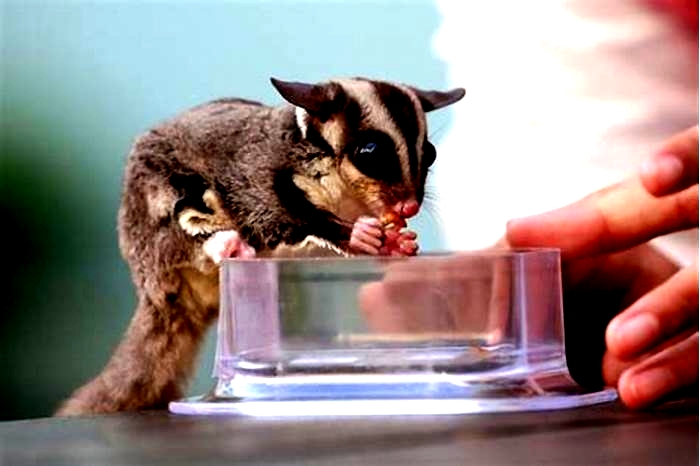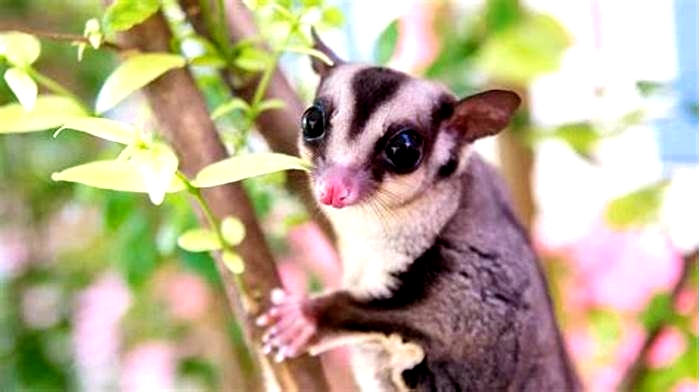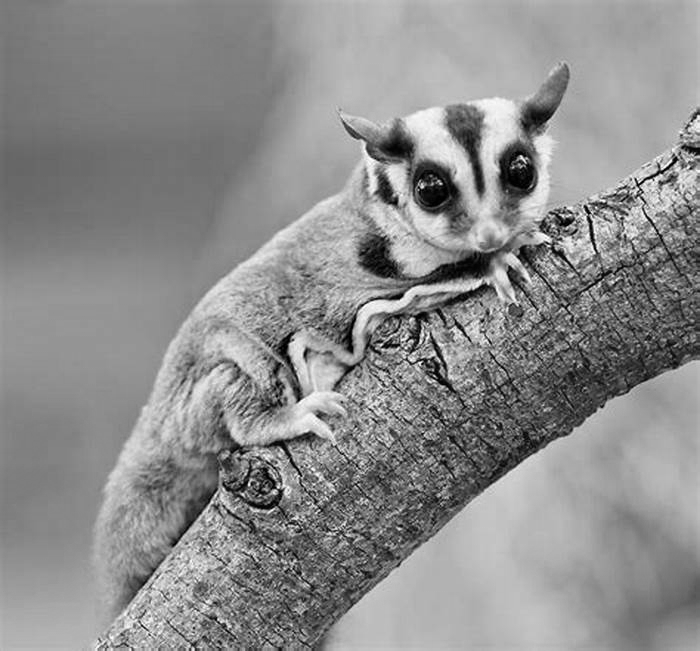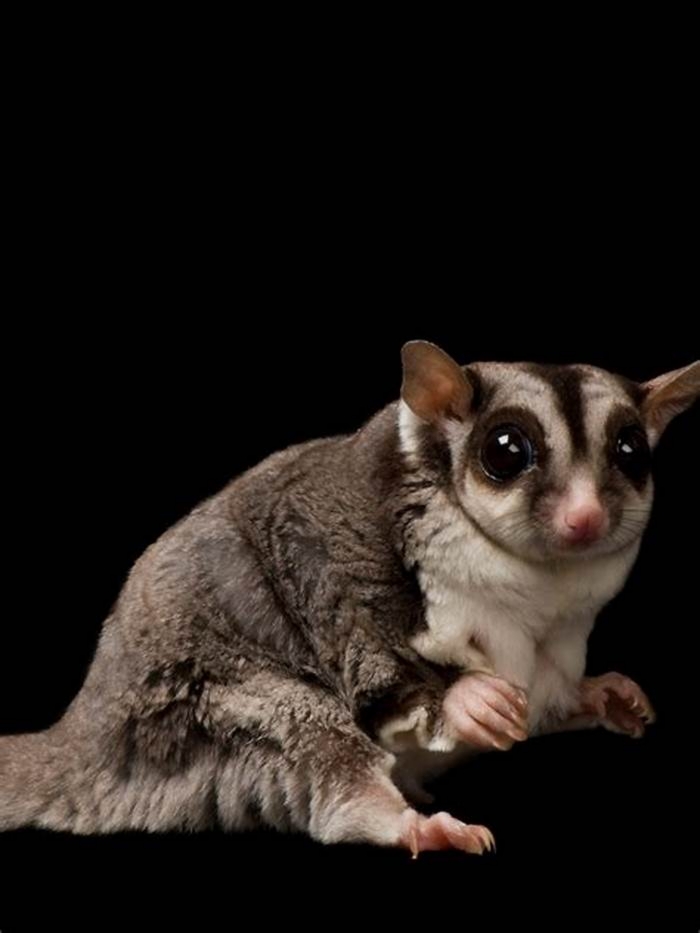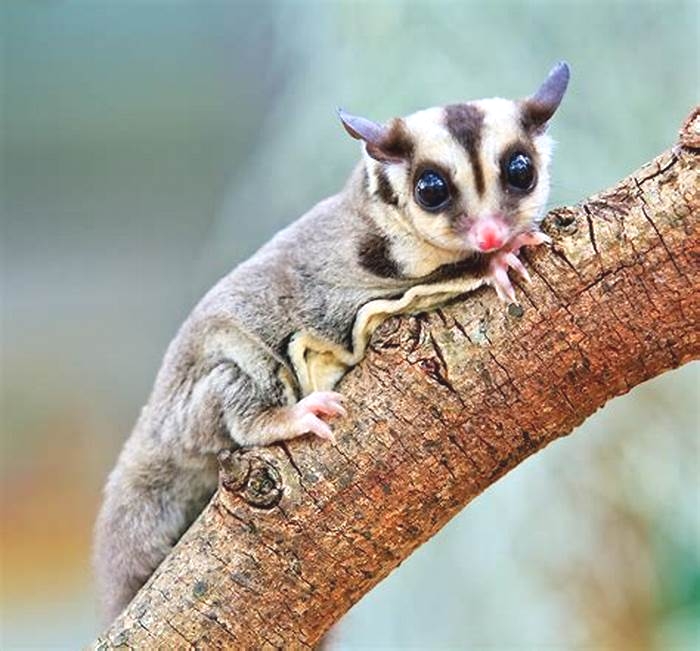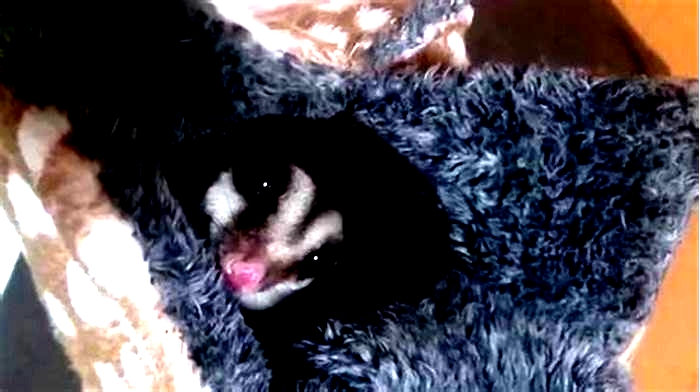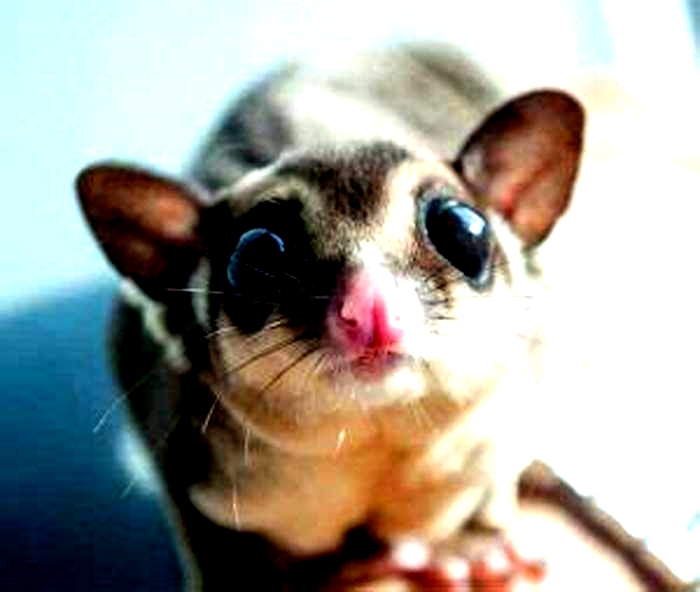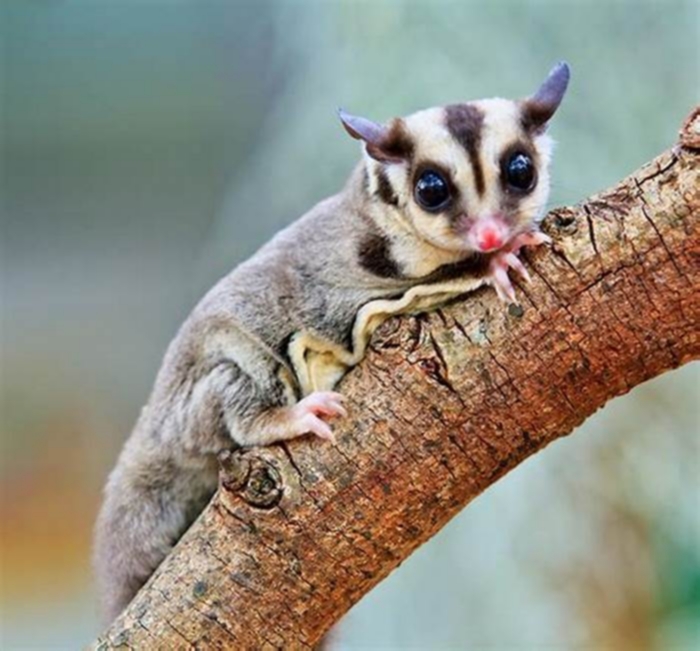Can sugar gliders be potty trained
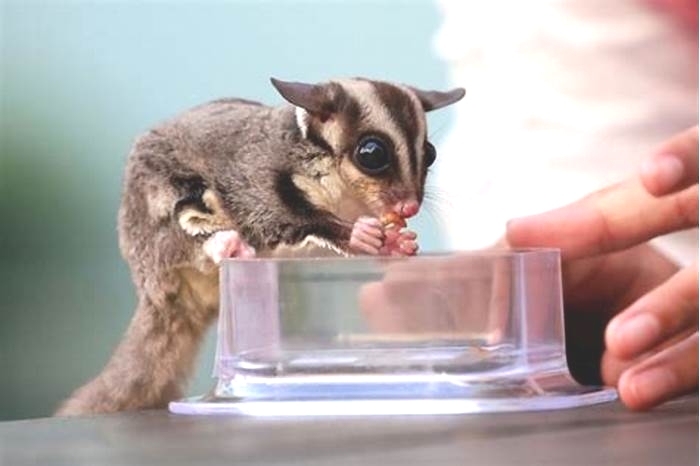
Do Sugar Gliders Pee and Poop Everywhere?
Sugar Gliders are often even referred to as pocket pets, which even sounds cute. Sugar Gliders are exotic in every sense of the word, with those sweet eyes and unique ability to glide, and the promises of an unbreakable bond, they are too much for one to resist! Okay, so you have seen these adorable animals for sale, but you have heard they can be messy. So you may be wondering, do Sugar Gliders pee and poop everywhere? Is this true?
Its not surprising that people are fascinated by Sugar Gliders, I mean, who wouldnt be? Sugar Gliders are some of the cutest little animals we can have as pets. They are sweet creatures that are so easy to love, but lets learn a little bit about their potty habits.
Do Sugar Gliders pee and poop everywhere?
Sugar Gliders do tend to poop and pee a lot, usually right after they wake up, or of course, if theyve been eating. They will relieve themselves like any animal whenever they feel the urge. If thats on you or your floor, they are not going to understand thats not what you want. Sugar Gliders do have habits you can pay attention to and learn.
For instance, youll notice they dont like to poop or pee where they sleep, and theyll relieve themselves usually right after they wake up. So, what does this mean, and how can this information help you?
Can Sugar Gliders be potty-trained?
There is a lot of debate around this topic. I believe the confusion lies in the understanding. A Sugar Glider can be potty trained but not in the same way a cat can. You can not put litter in their cage or set them up a special spot for them to go in.
They will not understand what youre expecting of them, but they can, or rather, you can learn their potty habits and create a routine that will stop you from being pottied on at least as much. It is sort of like potty-training but more for you than them.
As we have mentioned, Sugar Gliders do not potty where they sleep. Like people and most animals Sugar Gliders will potty once they wake up. There are a few things you can do here,
- You can either leave them in their cage for approximately half an hour ensuring they get most of their business done and out of the way, leaving you free to get them out with little to no accidents for a while unless you feed or give them more to drink.
- Or you can set-up a routine with your little guy or girl the moment you bring them home. When you get them out for a bonding session, you can set aside time right in the beginning to stimulate their bowels. You will do this by gently wiping its rear end with a baby wipe. Doing this will stimulate their bowels, and they will start to go if they were not already. They will continue to relieve themselves for a couple of mins. Then you will let them run around on you for a few minutes to help stimulate their digestive tract farther, they will relieve themselves a little more, and at the very end, you will wipe them a few more times, leaving them empty or very close to empty. You can now go about your bonding session or day without the worry of accidents.
Can Sugar Gliders wear diapers?
If you are looking for a pet thats mess-free, you might want to try a different pet, Sugar Gliders being an exotic animal are not the easiest pets. You will need to be okay with a little poop, pee, and spending a great deal of time with them.
With that said, Sugar Gliders should not wear diapers. Yes, they do sell them, but its dangerous. Wearing a diaper can cause damage to their patagium, their gliding membranes. This can be extremely dangerous and frankly not worth the risk.
If you watch the videos of gliders in diapers, youll see they can jump small spaces, thats a big difference between gliding and from further distances and jumping.
Sugar Gliders are very fragile. You have to be careful with what you do with them. Because they are exotic pets, you have to be especially vigilant because the misinformation surrounding them is great, this can cause a lot of unnecessary harm and heartache. They are so new to being pets we still dont understand everything about them, so be careful and do plenty of research.

Do Sugar Gliders warn you that they are getting ready to potty?
Sugar Gliders can not let you know when they need to relieve themselves the same way other animals would, So it is up to us to pay close attention and learn their habits. You may want to let your Sugar Glider sit in your pocket all day, You have done the above steps, but you notice they are starting to stir, that is most likely a sign of them waking up for a potty break.
Since you now know this, you can get them out and let them relieve themselves and be prepared to clean it up rather than it being random or an inopportune timing. It is a good idea to keep wipes on hand. Sugar Glider poop is rather small, like a mouses poop, and easy to clean up. They pee in such small amounts, it is also really easy to clean up.
You now know youll need to pay attention to the warning signs your Sugar Glider will give so you can save yourself any accidents, but you have heard of Sugar Glider diapers, wouldnt this be an easier and more suitable solution?
Are Sugar Gliders messy?
Sugar Gliders are not particularly messy, they dont need baths, they will self-clean, but they are in a cage with only so many places for their food, pee, and poo to go, and they do want everything to smell like them!
Sugar Gliders do pee and poop a relative amount, drop food to the bottom of the cage, and they like to mark their territory. You will need to clean their cage regularly, but when paying attention to their habits, you can prevent as many accidents outside their cage from happening.
Why does my Sugar Glider pee on me?
Just like many animals in the animal kingdom, Sugar Gliders, both male and female, will mark their territory. When they pee on you, they are basically saying you are their territory. Their smell on you will help them feel comfortable and familiar. Think of it as a compliment!
Do Sugar Gliders throw their Poop?
No, this is one thing you dont need to worry about, Sugar Gliders do not throw their poop.
Conclusion
Sugar Gliders are remarkable little creatures, a true treasure, but they are living, and all living things poo and pee, so if this bothers you, you might want to find a different pet that doesnt need to relieve themselves as often or can be potty-trained in the traditional sense. Some pets are not for everyone. Sugar Gliders are exotic, and they will need a bit more love and understanding than other pets.
Sugar Gliders are a very fulfilling pet, bonding to you the way most animals do not. If you are prepared and accepting of their habits and behaviors, they can make pleasant pets, and you one happy pet owner!
WildlifeInformer.com is your #1 source for free information about all types of wildlife and exotic pets. We also share helpful tips and guides on a variety of topics related to animals and nature.
Guide to Sugar Gliders: Care, Diet and Behavior
Sugar gliders, native to Australia and New Guinea, have soared in popularity as pets, offering a unique blend of playfulness and affection. However, aspiring and current owners often face challenges due to the specialized care these marsupials require.
In this guide, we delve into the fascinating world of sugar gliders. Did you know that sugar gliders can glide up to 50 meters in the wild? This remarkable ability is just one of the many fascinating aspects well explore.
Well take you on an in-depth look at the joys and responsibilities of owning a sugar glider, guiding you with expert advice and detailed insights.
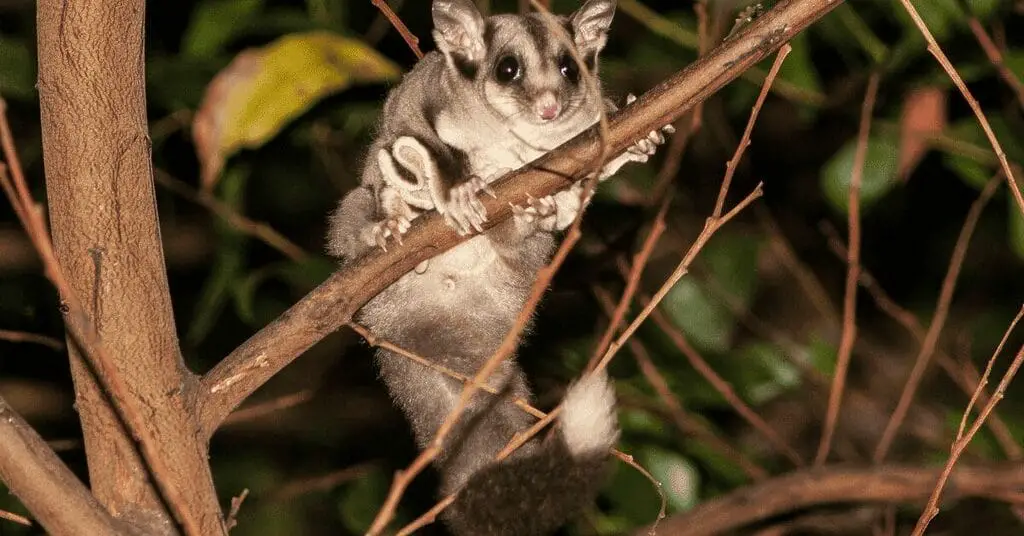
What are Sugar Gliders?
Sugar gliders (Petaurus breviceps) are small, nocturnal marsupials native to Australia, and New Guinea. Theyre named for their diet preference of sugary foods like nectar and sap and their unique ability to glide through the air.
Sugar gliders are increasingly popular as exotic pets due to their social nature and bond-forming capabilities with humans.
They are part of the same family as kangaroos and koalas and are similar in size to a squirrel. They have a distinctive membrane, called a patagium, which stretches from their forelegs to hind legs, enabling them to glide distances of up to 50 meters. This gliding ability is an adaptation for moving between trees in their arboreal habitat.
In captivity, they require a specific diet, including fruits, vegetables, and protein sources, to replicate their natural diet. Their social nature means they thrive in groups and can form strong bonds with their human caregivers, requiring regular interaction and engagement.
As nocturnal animals, sugar gliders are most active during the night. They communicate through a range of vocalizations and are known for their curiosity and playful behavior.
Potential owners should be aware that sugar gliders require a significant commitment in terms of time, diet management, and social interaction to ensure their well-being in a domestic setting.
Basic Care for Sugar Gliders
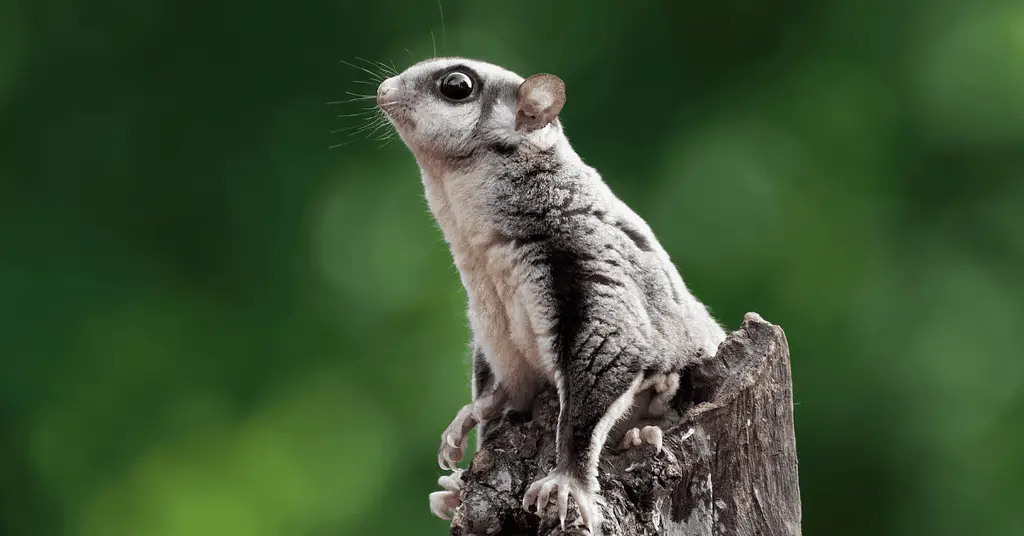
Transitioning from understanding what sugar gliders are, its crucial to focus on their basic care essentials. Proper care is fundamental to ensure the health and happiness of these unique pets.
Essentials of Sugar Glider Care
- Diet: Sugar gliders require a balanced diet consisting of fruits, vegetables, protein sources, and a calcium-to-phosphorus ratio to avoid nutritional deficiencies. A combination of commercial sugar glider food, fresh produce, and occasional treats is recommended.
- Habitat: They need a spacious, vertical cage to accommodate their gliding behavior. The enclosure should be equipped with branches or shelves for climbing and nesting boxes for sleeping.
- Environmental Enrichment: Toys, ropes, and swings can keep them entertained and promote physical activity. Sugar gliders also enjoy pouches or hammocks to rest in.
- Social Interaction: Being highly social animals, they thrive in pairs or groups and require daily interaction with their owners. Lack of social interaction can lead to depression and behavioral issues.
- Healthcare: Regular veterinary check-ups are important to monitor their health. Sugar gliders are prone to stress-related issues, so maintaining a stable environment is key.
- Handling and Bonding: Gentle handling and bonding pouches can help in developing trust with your sugar glider. However, patience is essential as this process can take time.
For a more detailed guide on caring for your sugar glider, refer to How to Care for a Sugar Glider. This resource provides in-depth information to help you create a nurturing and suitable environment for your sugar glider.
Dietary Needs of Sugar Gliders
Moving onto a critical aspect of sugar glider care, their dietary needs must be carefully managed to ensure optimal health. A well-balanced diet is key to preventing nutritional deficiencies and promoting longevity in these marsupials.
What Sugar Gliders Eat
- Natural Diet: In the wild, sugar gliders primarily consume nectar, tree sap, insects, and small vertebrates. This diet is rich in both carbohydrates and protein.
- Fruits and Vegetables: In captivity, their diet should include a variety of fresh fruits and vegetables. Safe options include apples, grapes, carrots, and greens. Its important to avoid fruits high in oxalates, like spinach, which can lead to health issues.
- Protein Sources: Protein can be provided through cooked lean meats, boiled eggs, and small amounts of yogurt. Specialized sugar glider pellets are also available, which can help in meeting their nutritional needs.
- Supplements: Calcium and vitamin supplements are often necessary to balance the calcium-to-phosphorus ratio in their diet, crucial for preventing metabolic bone disease.
- Water: Freshwater should always be available. Sugar gliders can become dehydrated quickly, especially if their diet is primarily dry food.
- Foods to Avoid: Some foods are toxic to sugar gliders, including chocolate, caffeine, and anything high in fat, sugar, or preservatives.
For a comprehensive list of what to feed your sugar glider and how to maintain a balanced diet, visit What Do Sugar Gliders Eat?. This resource offers detailed guidance on creating a nutritious diet plan that caters to the unique needs of sugar gliders.
Training and Behavior of Sugar Gliders
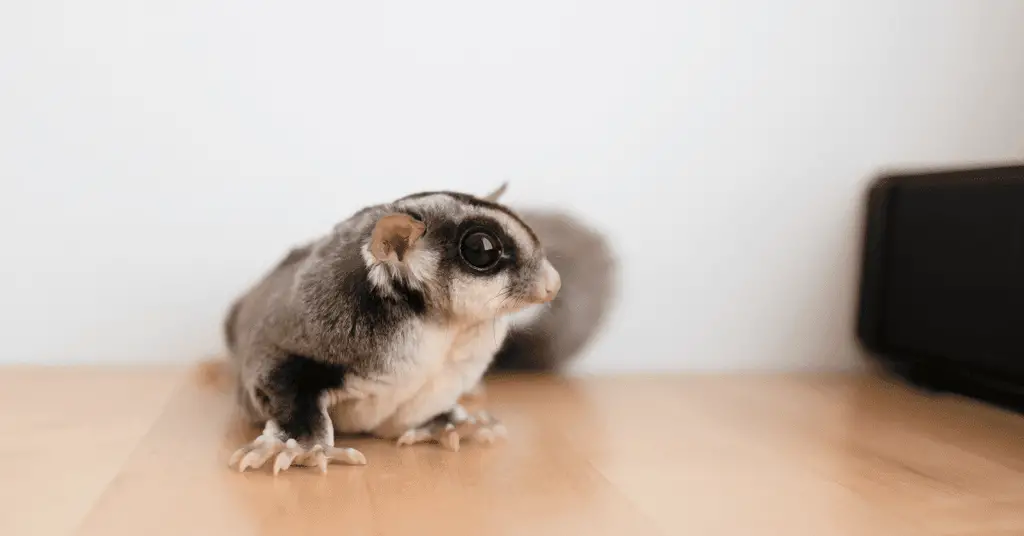
Advancing to another vital aspect of sugar glider care, understanding and training your sugar glider is essential for a harmonious pet-owner relationship. These intelligent creatures can learn various behaviors and commands, but this requires patience and consistency.
Understanding Sugar Glider Behavior
- Nocturnal Nature: Sugar gliders are active at night. Understanding their sleep-wake cycle is crucial for effective interaction and training.
- Vocalizations: They communicate through various sounds, each indicating different needs or emotions. Recognizing these can help you respond appropriately to their needs.
- Social Behavior: Sugar gliders are highly social and need regular interaction. Lack of social engagement can lead to stress and behavioral issues.
Training Your Sugar Glider
- Potty Training: With patience, sugar gliders can be trained to use a designated area for elimination. This requires consistency and positive reinforcement.
- Handling: Gradual and gentle handling helps in building trust. Start with short sessions and gradually increase the duration.
- Trick Training: Sugar gliders can learn simple tricks like coming when called. Use treats as rewards for positive reinforcement.
These resources will provide you with detailed strategies and tips to effectively train and understand your sugar glider, ensuring a well-adjusted and happy pet.
Bonding with Your Sugar Glider
Now, lets focus on the heartwarming aspect of owning a sugar glider: bonding. Establishing a bond with your sugar glider is a fulfilling part of the pet-owner experience, fostering trust and companionship.
How Sugar Gliders Bond with Their Owners
- Time and Patience: Bonding with a sugar glider often requires time and patience. Regular, gentle interaction can foster trust.
- Scent Familiarization: Sugar gliders rely heavily on their sense of smell to recognize people. Carrying a cloth with your scent or wearing a bonding pouch can help your sugar glider become accustomed to you.
- Consistent Handling: Gently handling your sugar glider daily helps in building a bond. Be mindful of their mood and energy levels to ensure positive interactions.
- Feeding: Hand-feeding treats can also aid in bonding, as it associates you with positive experiences.
- Voice Recognition: Talking to your sugar glider in a calm, soothing voice helps them recognize and feel comfortable with your presence.
- Understanding Body Language: Paying attention to their body language and vocalizations can guide you in how best to interact with them, respecting their boundaries and comfort levels.
For more detailed information on how sugar gliders bond with their owners, and to understand the depth of this relationship, visit Do Sugar Gliders Recognize Their Owners?. This resource will provide deeper insights into the unique ways sugar gliders form attachments with their human caregivers.
Health and Hygiene of Sugar Gliders
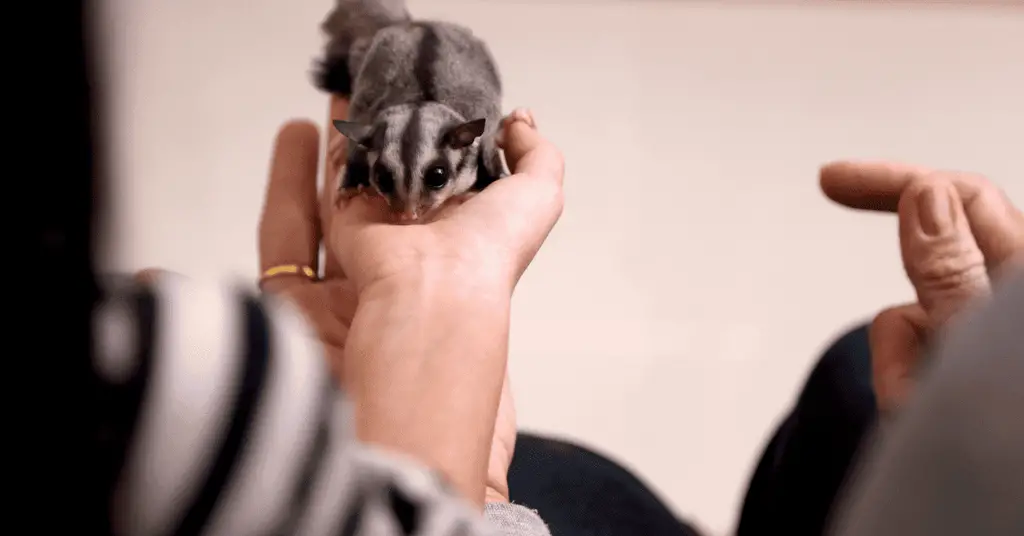
Shifting our attention to an equally important aspect, the health and hygiene of sugar gliders are fundamental to their overall well-being. Proper healthcare and cleanliness practices are crucial for maintaining a healthy pet.
Maintaining Sugar Glider Health
- Regular Veterinary Care: Routine check-ups with a vet experienced in exotic pets are essential. They can help in early detection and treatment of common health issues.
- Balanced Diet: As mentioned earlier, a balanced diet is vital for preventing nutritional deficiencies and supporting overall health.
- Exercise: Adequate exercise is necessary. Ensure their cage has enough space for movement and provide time outside the cage in a safe, glider-proofed area.
- Stress Management: Minimizing stress through a stable environment and regular social interaction is important for their mental health.
Hygiene Practices
- Cage Cleaning: Regular cleaning of their cage and accessories to prevent the buildup of waste and bacteria is essential.
- Self-Cleaning: Sugar gliders are generally clean animals and will groom themselves. Avoid using any harsh chemicals or soaps on them.
- Odor Control: While sugar gliders themselves are not particularly odorous, their cage can develop an odor if not maintained properly. Use safe, pet-friendly cleaning solutions.
For more insights into the hygiene aspects and addressing the common question, Do Sugar Gliders Stink?, visit Do Sugar Gliders Stink?. This resource offers detailed information on keeping your sugar glider and their environment clean and odor-free.
Ethical Considerations in Keeping Sugar Gliders
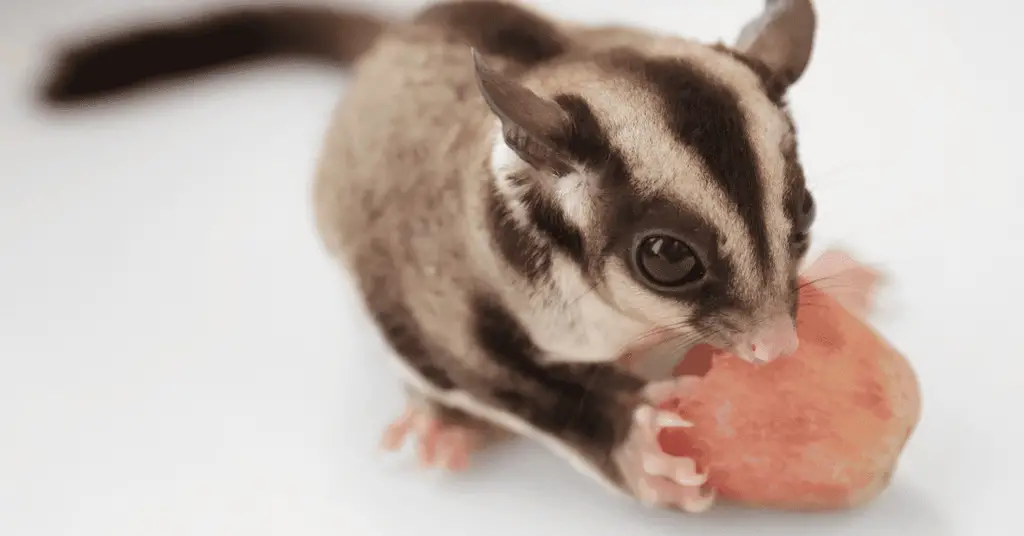
Now, its crucial to address the ethical considerations surrounding sugar gliders as pets. This topic involves a nuanced debate about the well-being and natural habitat of these unique animals.
The Debate on Keeping Sugar Gliders as Pets
- Wildlife Conservation: Sugar gliders are wild animals, and their suitability as domestic pets is debated. Issues include the impact of pet trade on wild populations and the ability of owners to replicate a natural environment.
- Complex Needs: These animals have complex dietary and social needs that can be challenging to meet in a household setting. Their nocturnal lifestyle and requirement for a spacious environment are often underestimated.
- Longevity and Commitment: Sugar gliders have a lifespan of 10-15 years in captivity, requiring a long-term commitment from owners.
- Legal and Ethical Breeding: Prospective owners should consider where their pet comes from. Ethical breeding practices and legality in certain regions are important factors.
- Rescue and Adoption: Adoption from shelters or rescues is an ethical consideration, as it provides a home for gliders who need one, rather than supporting the demand from breeders.
For a deeper exploration of this topic and to understand different viewpoints in the debate about the ethics of keeping sugar gliders as pets, visit Is It Cruel to Keep Sugar Gliders as Pets?. This resource will help you consider the moral implications and responsibilities involved in deciding to keep a sugar glider as a pet.
Legal Aspects of Owning Sugar Gliders
Additionally, its imperative for potential and current sugar glider owners to understand the legal aspects of owning these animals. The legality of keeping sugar gliders as pets varies widely depending on geographic location.
Understanding the Legalities
- Variation by Region: Laws regarding the ownership of sugar gliders differ significantly from one region to another. In some areas, they are completely legal, while in others, they are restricted or even banned.
- Permits and Regulations: In regions where sugar gliders are legal, owners may still be required to obtain permits. Its crucial to check local wildlife and exotic pet regulations.
- Californias Laws: For instance, in California, the ownership of sugar gliders is subject to specific legal stipulations. Understanding these laws helps in ensuring compliance and avoiding legal issues.
- Import and Export Restrictions: There may also be laws governing the import and export of sugar gliders, aimed at protecting native ecosystems and the animals themselves.
- Ethical Breeding and Trade: Legal ownership also involves ensuring that the sugar glider was ethically bred and acquired, adhering to laws against illegal wildlife trade.
For specific information on the legal status of sugar gliders in California and more insights into the legal considerations of owning a sugar glider, visit Are Sugar Gliders Legal in California?. This resource provides essential details to help you navigate the legal landscape of sugar glider ownership.
Conclusion
In summarizing our comprehensive guide to sugar gliders, its clear that these charming marsupials require dedicated care and a deep understanding of their unique needs.
From their specialized dietary requirements to their nocturnal behaviors, owning a sugar glider is a significant commitment. Their ability to bond with humans adds a special dimension to the pet-owner relationship, but it also underscores the importance of regular interaction and social engagement for their mental well-being.
Legal and ethical considerations cannot be overlooked when deciding to welcome a sugar glider into your home.
The debate on the ethics of keeping sugar gliders, along with varying legal requirements in different regions, highlights the need for thorough research and responsible decision-making. Ultimately, providing a nurturing, safe, and enriching environment is key to the health and happiness of these fascinating creatures.

